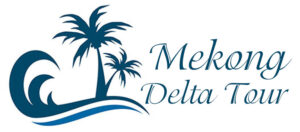The Mekong River Vietnam, a mighty waterway that flows through six countries in Southeast Asia, holds a special significance in Vietnam. This iconic river, known as the Cuu Long (Nine Dragons) River in Vietnam, is a vital lifeline for millions of people, shaping the country’s landscape, economy, and cultural heritage.
Introduction to the Mekong River
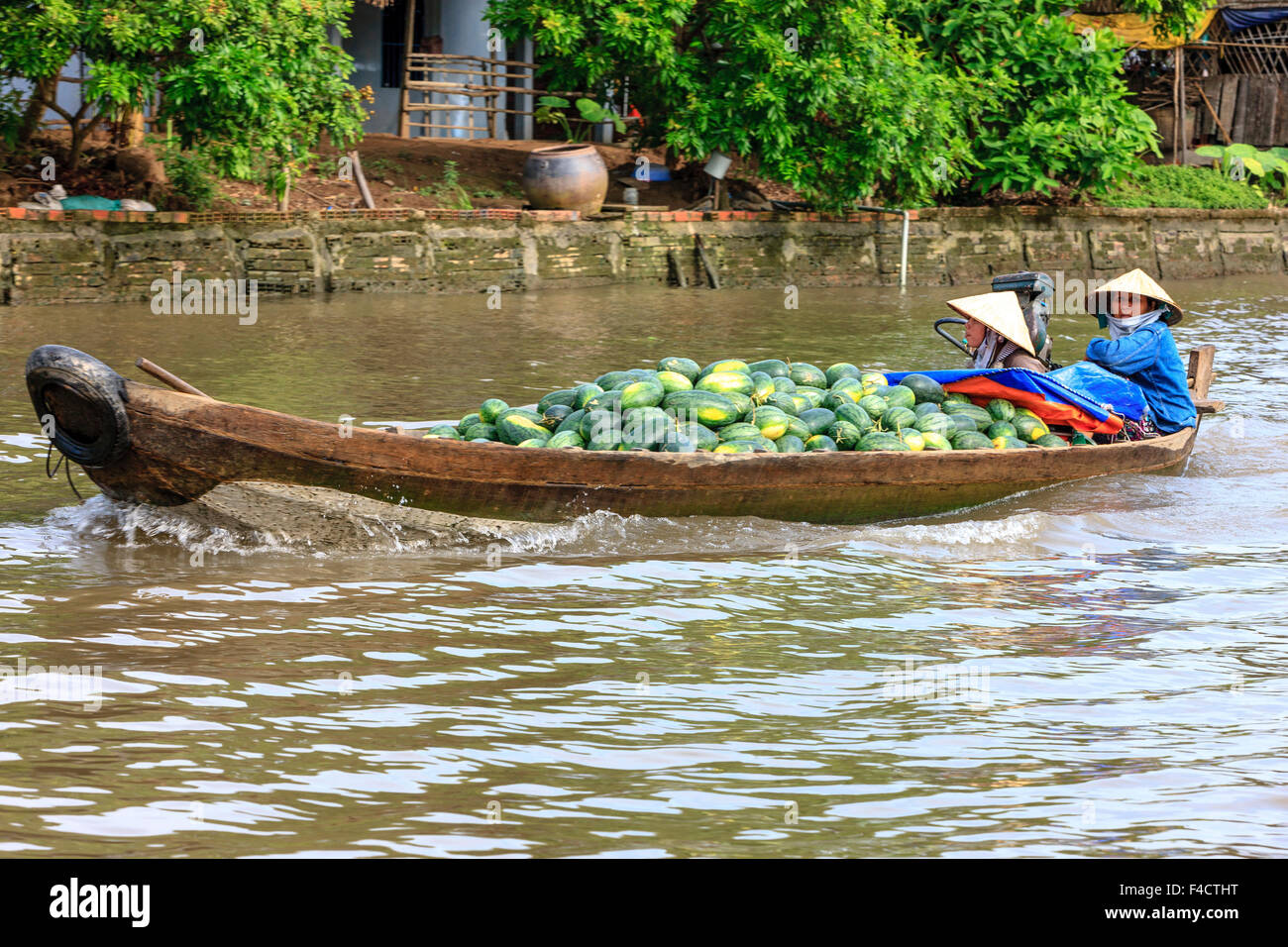
The Mekong River is one of the most iconic rivers in Southeast Asia, flowing through six countries before emptying into the South China Sea. In Vietnam, the Mekong River Vietnam is known as the Cuu Long (Nine Dragons) River, as it splits into nine branches before reaching the sea. The river plays a vital role in the lives of millions of Vietnamese people, providing water for drinking, irrigation, and transportation. The Mekong River is also home to a rich diversity of plant and animal life. The river basin is home to over 1,000 species of fish, as well as many other animals, such as birds, reptiles, and mammals. The Mekong River is also a major source of food for people in Vietnam, and the fish catch from the river is an important part of the country’s economy.
Geographical Significance
- The Mekong River enters Vietnam from Laos in the northwest of the country.
- It flows south through the Central Highlands before reaching the Mekong Delta.
- The Mekong Delta is a vast area of land that is home to nine provinces.
- The river is about 4,800 kilometers long, making it the 12th longest river in the world.
- It has a drainage basin of about 795,000 square kilometers, the 10th largest river basin globally.
Cultural and Historical Importance
- The Mekong River has played a crucial role in the development of Vietnamese civilization since ancient times.
- It has been a vital transportation route, facilitating trade and cultural exchange.
- Many ancient settlements and cities were established along the river’s banks.
- The river is deeply ingrained in Vietnamese folklore, literature, and art.
Geography of the Mekong River Vietnam
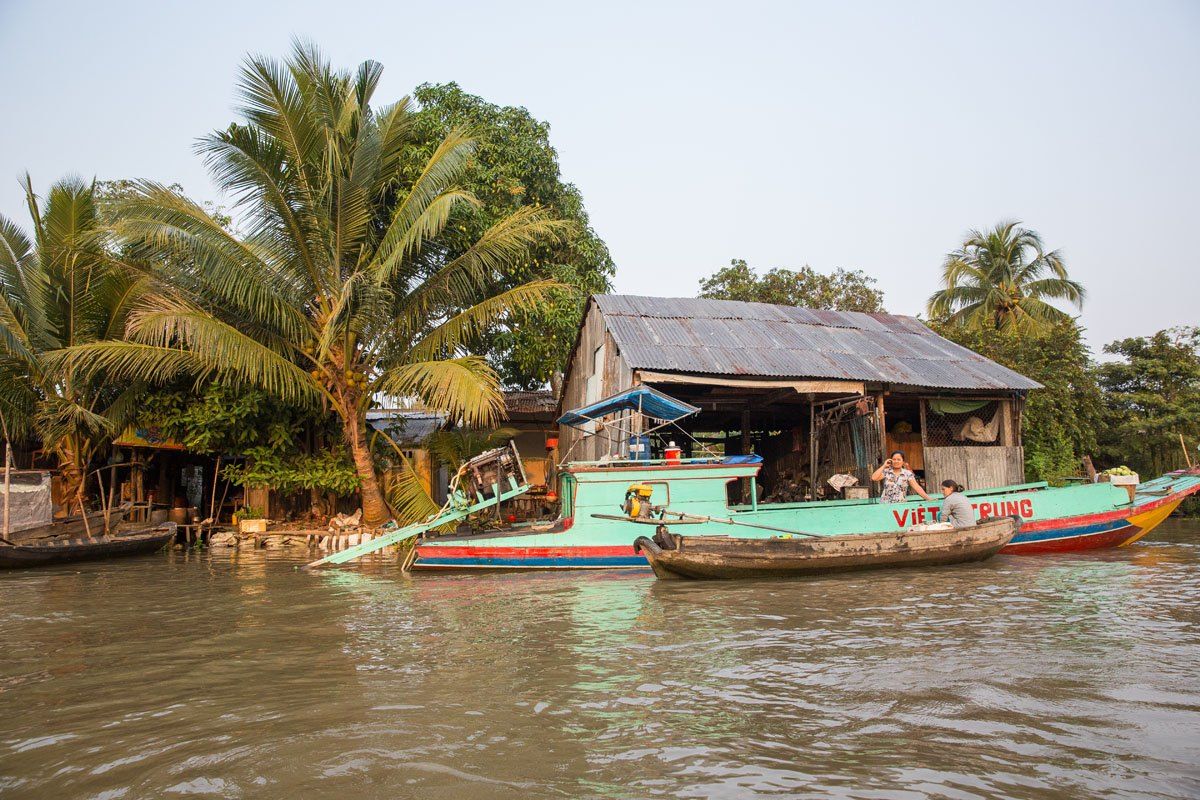
The Mekong River’s journey through Vietnam is a remarkable one, traversing diverse landscapes and shaping the country’s geography.
The Mekong Delta
The Mekong Delta is one of the most important agricultural regions in Vietnam, and it produces a wide variety of crops, including rice, vegetables, and fruit. This fertile region is formed by the Mekong River as it splits into nine main branches before emptying into the South China Sea.
Delta Provinces
- The Mekong Delta comprises nine provinces: An Giang, Ben Tre, Dong Thap, Kien Giang, Long An, Soc Trang, Tien Giang, Tra Vinh, and Vinh Long.
- These provinces are known for their lush landscapes, intricate canal systems, and rich agricultural traditions.
Significance of the Delta
- The delta region is a vital source of food production, accounting for a significant portion of Vietnam’s rice, fruit, and aquaculture exports.
- It is a major hub for inland waterway transportation, facilitating trade and movement of goods.
- The delta’s unique ecosystem, comprising wetlands, mangrove forests, and rich biodiversity, is an important ecological resource.
The Central Highlands
Before reaching the Mekong Delta, the river flows through the Central Highlands of Vietnam, a region characterized by rugged terrain, highlands, and unique indigenous cultures.
Topography and Landscapes
- The Central Highlands feature a diverse range of landscapes, including mountains, plateaus, and valleys.
- The region is known for its coffee plantations, which thrive in the fertile soil and cool climate.
- It is home to several ethnic minority groups, each with their distinct traditions and way of life.
Hydroelectric Power
- The Mekong River Vietnam and its tributaries in the Central Highlands are a crucial source of hydroelectric power for Vietnam.
- Several dams and hydroelectric plants have been constructed along the river’s course, providing renewable energy to the country.
The Upper Mekong
The Mekong River Vietnam enters Vietnam from Laos in the northwest, winding through remote and sparsely populated regions.
Border Crossings
- The river serves as a natural border between Vietnam and Laos, as well as Vietnam and Cambodia.
- Several border crossings and trade routes have been established along the Mekong River, facilitating cross-border commerce and travel.
Remote Communities
- The upper reaches of the Mekong River Vietnam are home to isolated communities that rely heavily on the river for sustenance and transportation.
- These communities often maintain traditional ways of life, such as fishing, farming, and artisanal crafts.
Biodiversity along the Mekong River Vietnam
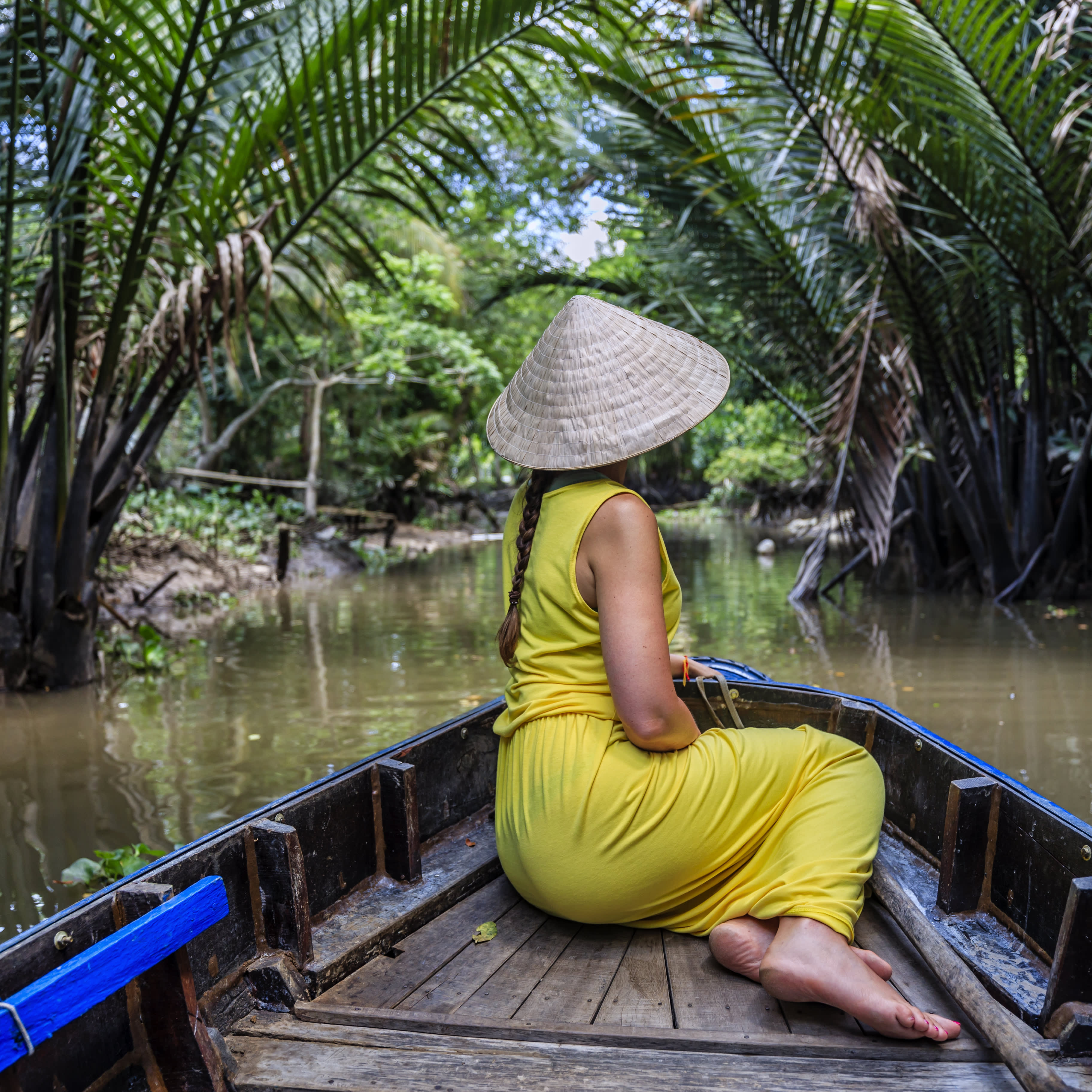
The Mekong River Vietnam and its surrounding ecosystems are home to a remarkable diversity of plant and animal life, making it an important biodiversity hotspot in Southeast Asia.
Aquatic Biodiversity
The Mekong River basin is renowned for its rich aquatic biodiversity, hosting over 1,000 species of fish, including many endemic and endangered species.
Fish Species
- The Mekong River is home to iconic fish species like the Mekong giant catfish, the world’s largest freshwater fish.
- Other notable species include the Siamese giant carp, the giant barb, and the Mekong river dolphin (critically endangered).
Threats to Aquatic Life
- Overfishing, habitat loss, pollution, and the construction of dams and hydroelectric projects have put many aquatic species at risk.
- Conservation efforts are underway to protect and restore the river’s aquatic biodiversity.
Terrestrial Biodiversity
The Mekong River and its surrounding landscapes support a diverse array of terrestrial plant and animal life.
Forests and Wetlands
- The river’s floodplains and wetlands are home to various species of birds, reptiles, and mammals, including the critically endangered Siamese crocodile.
- The surrounding forests and protected areas provide habitats for species like the Asian elephant, the Indochinese tiger, and the Malayan sun bear.
Conservation Challenges
- Deforestation, illegal wildlife trade, and habitat fragmentation pose significant threats to the region’s terrestrial biodiversity.
- Efforts are being made to establish protected areas, promote sustainable land use practices, and raise awareness about the importance of biodiversity conservation.
Economic Importance of the Mekong River Vietnam

The Mekong River plays a vital role in Vietnam’s economy, supporting various sectors and contributing significantly to the country’s development.
Agriculture and Aquaculture
The fertile lands along the Mekong River Vietnam and its delta region are instrumental in Vietnam’s agricultural production.
Rice Cultivation
- The Mekong Delta is Vietnam’s primary rice-growing region, accounting for a significant portion of the country’s rice exports.
- The river’s annual floods and nutrient-rich sediments provide ideal conditions for rice cultivation.
Aquaculture and Fishing
- The Mekong River and its tributaries support a thriving aquaculture industry, including the farming of shrimp, catfish, and other freshwater fish species.
- Fishing communities along the river rely on the Mekong’s rich fish stocks for their livelihoods.
Transportation and Trade
The Mekong River serves as a vital transportation route, facilitating the movement of goods and people within Vietnam and across international borders.
Inland Waterways
- The river and its tributaries form an extensive network of inland waterways, enabling the transportation of agricultural products, raw materials, and manufactured goods.
- River ports and harbors along the Mekong are crucial for domestic and international trade.
Cross-Border Trade
- The Mekong River flows through Vietnam, Cambodia, Laos, Thailand, Myanmar, and China, enabling cross-border trade and economic cooperation among these countries.
- The river has played a crucial role in the development of the Greater Mekong Subregion (GMS), an economic cooperation program involving the Mekong countries.
Tourism and Recreation
The Mekong River Vietnam and its surrounding landscapes offer numerous opportunities for tourism and recreational activities, contributing to Vietnam’s growing tourism industry.
Ecotourism and Adventure Travel
- The Mekong Delta region is a popular destination for ecotourism, offering visitors the chance to explore the intricate canal systems, floating markets, and traditional ways of life.
- Adventure activities like kayaking, trekking, and cycling along the Mekong River are gaining popularity among tourists.
Cultural and Historical Attractions
- Many historical sites, ancient temples, and cultural attractions are located along the Mekong River, showcasing Vietnam’s rich heritage and attracting visitors from around the world.
Challenges facing the Mekong River in Vietnam
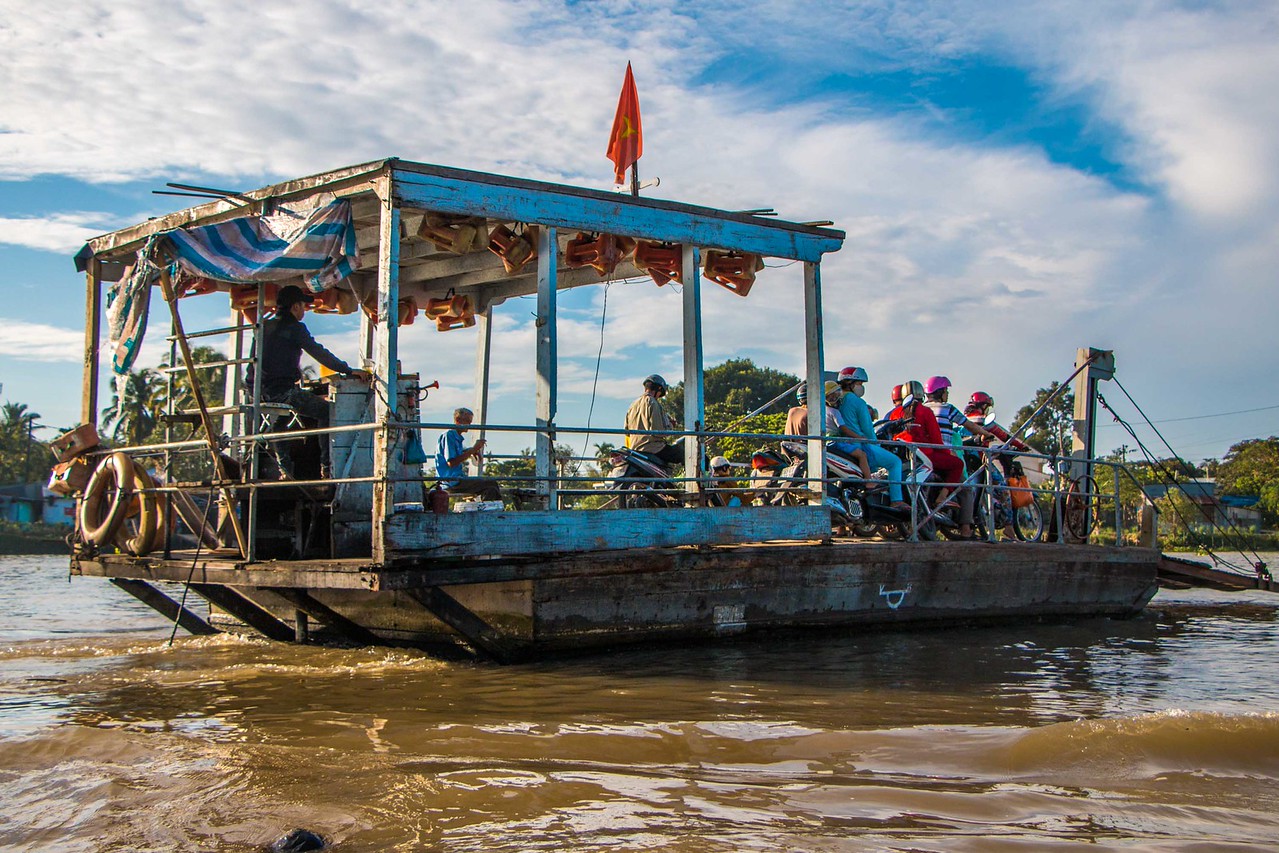
Despite its immense importance, the Mekong River Vietnam and its surrounding ecosystems face several challenges that threaten theirsustainability and long-term viability.
Pollution and Water Quality
Pollution from agricultural runoff, industrial activities, and urban development poses a significant threat to the water quality of the Mekong River Vietnam.
- Chemical Contamination: Pesticides, fertilizers, and other chemicals used in agriculture can leach into the river, affecting aquatic life and human health.
- Plastic Pollution: The improper disposal of plastic waste contributes to the accumulation of plastic debris in the river, harming wildlife and ecosystems.
- Sedimentation: Soil erosion and deforestation increase sedimentation in the river, impacting water clarity and aquatic habitats.
Dam Construction and Hydropower Development
The construction of dams and hydropower projects along the Mekong River Vietnam has raised concerns about their environmental and social impacts.
- Flow Alteration: Dams regulate the flow of the river, affecting seasonal flooding patterns and the natural ecosystem dynamics.
- Fish Migration: Dams can block fish migration routes, disrupting fish populations and fisheries downstream.
- Community Displacement: The reservoirs created by dams can lead to the displacement of local communities and loss of livelihoods.
Climate Change Effects
Climate change poses additional challenges to the Mekong River Vietnam, exacerbating existing threats and introducing new risks.
- Extreme Weather Events: Increased frequency and intensity of extreme weather events, such as floods and droughts, can disrupt ecosystems and agricultural activities.
- Sea Level Rise: Rising sea levels due to climate change threaten the low-lying areas of the Mekong Delta, increasing the risk of saltwater intrusion and land loss.
- Temperature Changes: Shifts in temperature patterns can impact the distribution of species, alter river flows, and affect water quality.
Illegal Fishing and Overexploitation
Illegal fishing practices and overexploitation of fish stocks pose a serious threat to the biodiversity and ecological balance of the Mekong River Vietnam.
- Electrofishing: The use of electrofishing, a destructive fishing method that involves stunning fish with electric shocks, is widespread in the region.
- Overfishing: Unsustainable fishing practices and high demand for fish products have led to the depletion of fish populations in the river.
- Bycatch: Non-target species, including endangered freshwater dolphins and turtles, are often caught unintentionally in fishing nets.
Governance and Transboundary Issues
Effective governance and cooperation among Mekong countries are essential for addressing the complex challenges facing the river and ensuring sustainable management.
- Transboundary Cooperation: The Mekong River flows through multiple countries, requiring coordinated efforts to manage shared resources and address common issues.
- Policy Alignment: Harmonizing policies and regulations related to water use, dam construction, and environmental protection is crucial for sustainable development.
- Stakeholder Engagement: Involving local communities, indigenous groups, NGOs, and other stakeholders in decision-making processes can enhance conservation efforts and promote sustainable practices.
Tourism opportunities along the Mekong River Vietnam
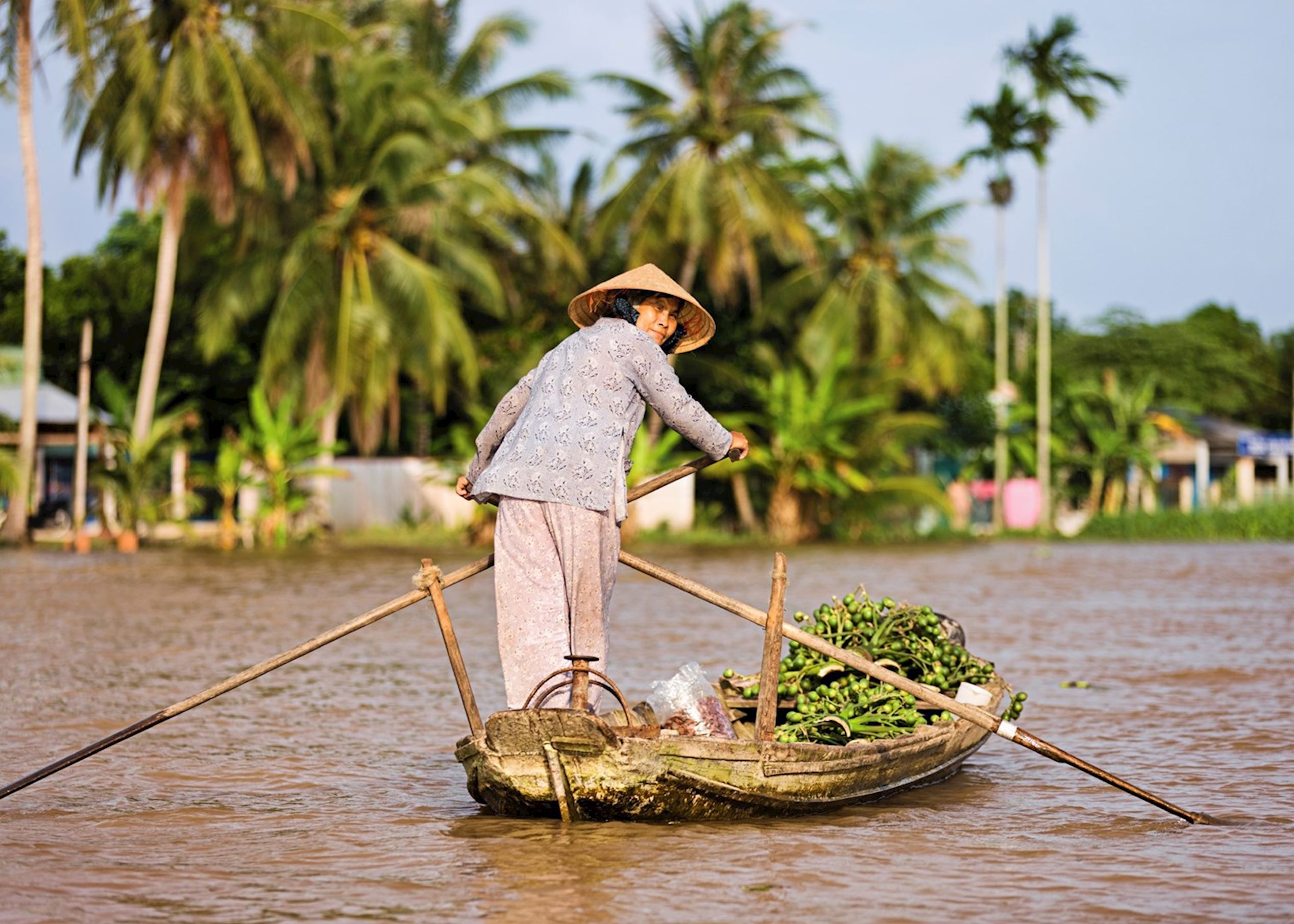
The Mekong River Vietnam offers a wealth of tourism opportunities, attracting visitors with its natural beauty, cultural heritage, and unique experiences.
River Cruises and Boat Tours
River cruises and boat tours along the Mekong River are popular among tourists seeking to explore the scenic landscapes and traditional villages of Vietnam.
- Floating Markets: Visitors can experience the vibrant atmosphere of floating markets, where local vendors sell fresh produce, handicrafts, and street food from their boats.
- Cultural Immersion: Boat tours provide opportunities to interact with local communities, learn about their customs and traditions, and sample authentic Vietnamese cuisine.
Ecological Tours and Wildlife Watching
Ecological tours and wildlife watching activities allow travelers to discover the diverse flora and fauna of the Mekong River and its surrounding habitats.
- Birdwatching: The Mekong Delta is a haven for birdwatchers, with numerous species of birds inhabiting the wetlands, forests, and rice fields of the region.
- Nature Reserves: Guided tours to nature reserves and protected areas offer insights into conservation efforts and the importance of preserving biodiversity.
Adventure Sports and Outdoor Activities
Adventure sports and outdoor activities along the Mekong River cater to thrill-seekers and nature enthusiasts looking for adrenaline-pumping experiences.
- Kayaking and Canoeing: Exploring the meandering waterways and mangrove forests of the Mekong Delta by kayak or canoe provides a unique perspective on the region’s natural beauty.
- Cycling Tours: Cycling tours along the riverbanks and rural trails offer opportunities to discover hidden gems, interact with locals, and immerse oneself in the countryside.
Culinary Experiences and Food Tours
Culinary experiences and food tours showcase the rich gastronomic heritage of the Mekong River region, allowing visitors to savor authentic Vietnamese dishes and local delicacies.
- Cooking Classes: Hands-on cooking classes teach participants how to prepare traditional Vietnamese recipes using fresh ingredients sourced from local markets.
- Food Markets: Visits to bustling food markets introduce travelers to a variety of flavors, spices, and culinary traditions unique to the Mekong Delta.
Cultural Festivals and Events
Cultural festivals and events held along the Mekong River provide insights into the vibrant traditions, music, dance, and folklore of the local communities.
- Water Festivals: Celebrations like the Ok Om Bok Festival and the Chol Chnam Thmay New Year festival feature colorful parades, boat races, and cultural performances.
- Artisan Workshops: Artisan workshops and craft villages offer opportunities to observe traditional crafts, such as pottery, weaving, and wood carving, being practiced by skilled artisans.
Cultural significance of the Mekong River Vietnam
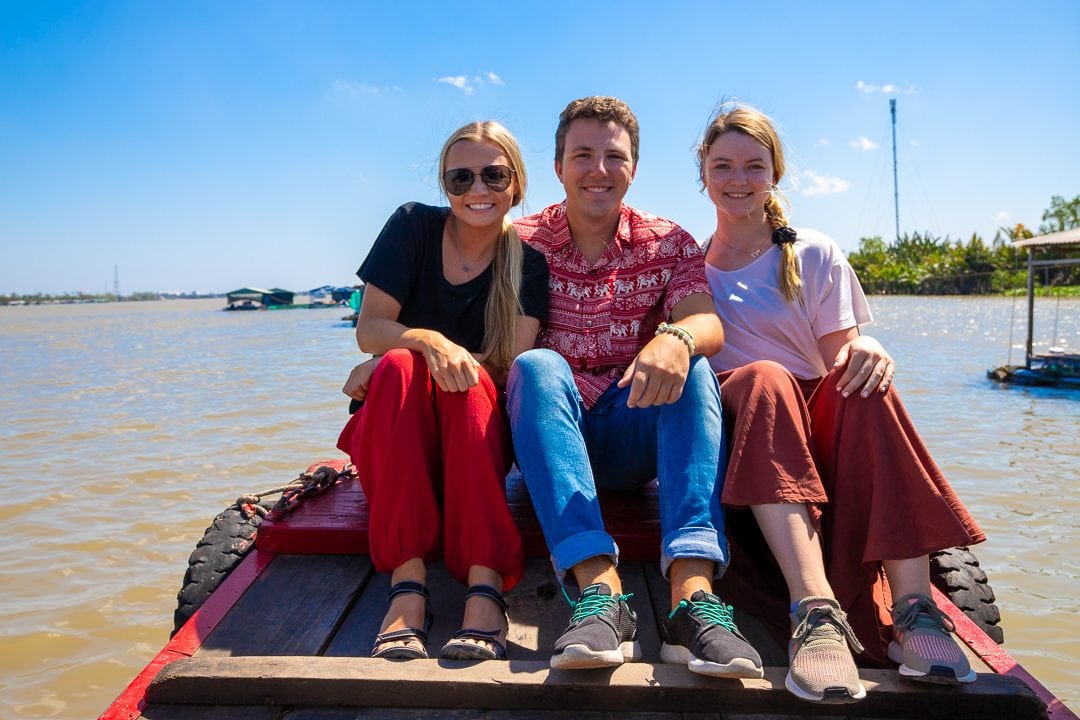
The Mekong River holds immense cultural significance for the people of Vietnam, shaping their way of life, beliefs, and traditions for centuries.
Spiritual Beliefs and Rituals
The Mekong River is revered as a sacred entity in Vietnamese culture, associated with spiritual beliefs, myths, and rituals passed down through generations.
- River Worship: Many communities along the Mekong River perform rituals and ceremonies to honor the river spirit and seek blessings for prosperity and abundance.
- Ancestral Connections: The river is believed to connect the living with their ancestors, serving as a link between past, present, and future generations.
Folklore and Legends
Numerous folklore tales and legends are woven around the Mekong River, narrating stories of mythical creatures, heroic deeds, and supernatural beings.
- Dragon Legend: The Mekong River is often likened to a dragon, symbolizing power, strength, and protection in Vietnamese folklore.
- Mermaid Stories: Legends of mermaids inhabiting the river’s waters reflect the deep-rooted connection between humans and the aquatic world.
Traditional Practices and Customs
The Mekong River Vietnam influences various aspects of daily life and cultural practices in Vietnam, shaping traditions related to agriculture, fishing, and community life.
- Water-based Livelihoods: Fishing communities rely on the river for sustenance and livelihoods, following age-old practices and techniques handed down through generations.
- Boat Culture: Boats play a central role in the cultural identity of riverside communities, serving as modes of transportation, trade, and social gatherings.
Festivals and Celebrations
Festivals and celebrations held along the Mekong River commemorate important events, seasons, and cultural milestones, fostering a sense of community and shared heritage.
- Tet Festival: The Lunar New Year festival, known as Tet, is celebrated with great fervor along the Mekong River, featuring feasts, fireworks, and traditional performances.
- Harvest Festivals: Festivals marking the rice harvest and agricultural cycles pay tribute to the river’s role in sustaining livelihoods and ensuring food security.
Art and Literature
The Mekong River has inspired artists, poets, writers, and musicians to create works that capture its beauty, mystique, and timeless allure.
- Paintings and Drawings: Artists depict the landscapes, people, and wildlife of the Mekong River in their paintings, showcasing its diversity and cultural significance.
- Poetry and Songs: Poets and songwriters compose verses and lyrics that evoke the sights, sounds, and emotions evoked by the flowing waters of the river.
Impact of climate change on the Mekong River Vietnam
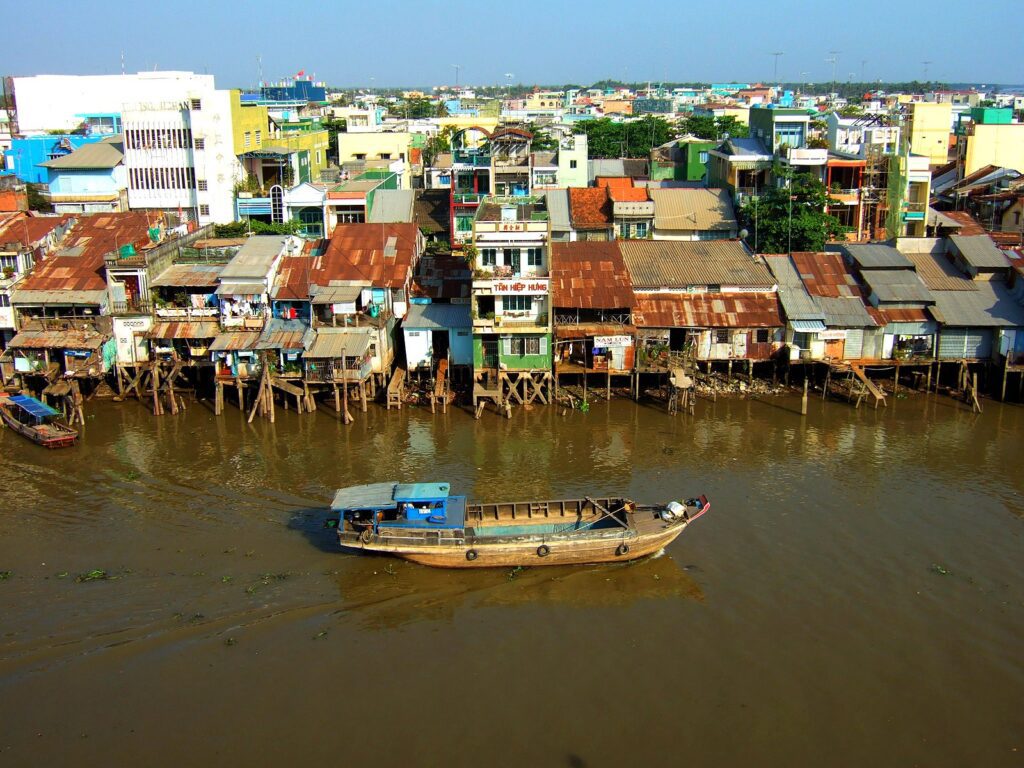
Climate change is exerting profound effects on the Mekong River in Vietnam, altering its hydrology, ecology, and socio-economic dynamics in significant ways.
Changing Hydrological Patterns
Climate change is leading to shifts in precipitation patterns, temperatures, and river flows, impacting the hydrology of the Mekong River Vietnam.
- Erratic Rainfall: Irregular rainfall patterns and changing monsoon seasons affect water availability, agricultural productivity, and river levels.
- Droughts and Floods: More frequent and severe droughts and floods disrupt ecosystems, agriculture, and water management systems along the river.
Sea Level Rise and Salinity Intrusion
Rising sea levels due to climate change pose a threat to the low-lying areas of the Mekong Delta, increasing the risk of saltwater intrusion and land degradation.
- Saltwater Intrusion: Higher sea levels push saline water further inland, contaminating freshwater sources, damaging crops, and threatening livelihoods.
- Coastal Erosion: Increased erosion along the delta coastlines leads to land loss, displacement of communities, and loss of valuable agricultural land.
Biodiversity Loss and Habitat Degradation
Climate change impacts biodiversity along the Mekong River, causing habitat loss, species extinction, and disruptions to ecological balance.
- Species Vulnerability: Endangered species like the Mekong river dolphin, Siamese crocodile, and Asian elephant face heightened risks due to habitat degradation and climate-related stressors.
- Ecosystem Resilience: Climate change challenges the resilience of ecosystems to adapt to changing conditions, affecting the overall health and functioning of the river basin.
Socio-economic Impacts and Vulnerabilities
Communities living along the Mekong River are vulnerable to the socio-economic impacts of climate change, including food insecurity, water scarcity, and livelihood disruptions.
- Agricultural Challenges: Farmers face difficulties in crop cultivation, irrigation, and pest management due to climate variability and extreme weather events.
- Fisheries Decline: Changes in river flows, water temperatures, and fish habitats affect fish populations, posing risks to the livelihoods of fishing communities.
Adaptation and Mitigation Strategies
To address the impacts of climate change on the Mekong River, adaptation and mitigation strategies are being implemented at local, national, and regional levels.
- Water Management: Integrated water resource management approaches aim to optimize water use, reduce risks of floods and droughts, and enhance water security in the Mekong basin.
- Ecosystem Restoration: Conservation initiatives focus on restoring degraded habitats, protecting biodiversity hotspots, and enhancing the resilience of ecosystems to climate stressors.
Conservation efforts for the Mekong River Vietnam
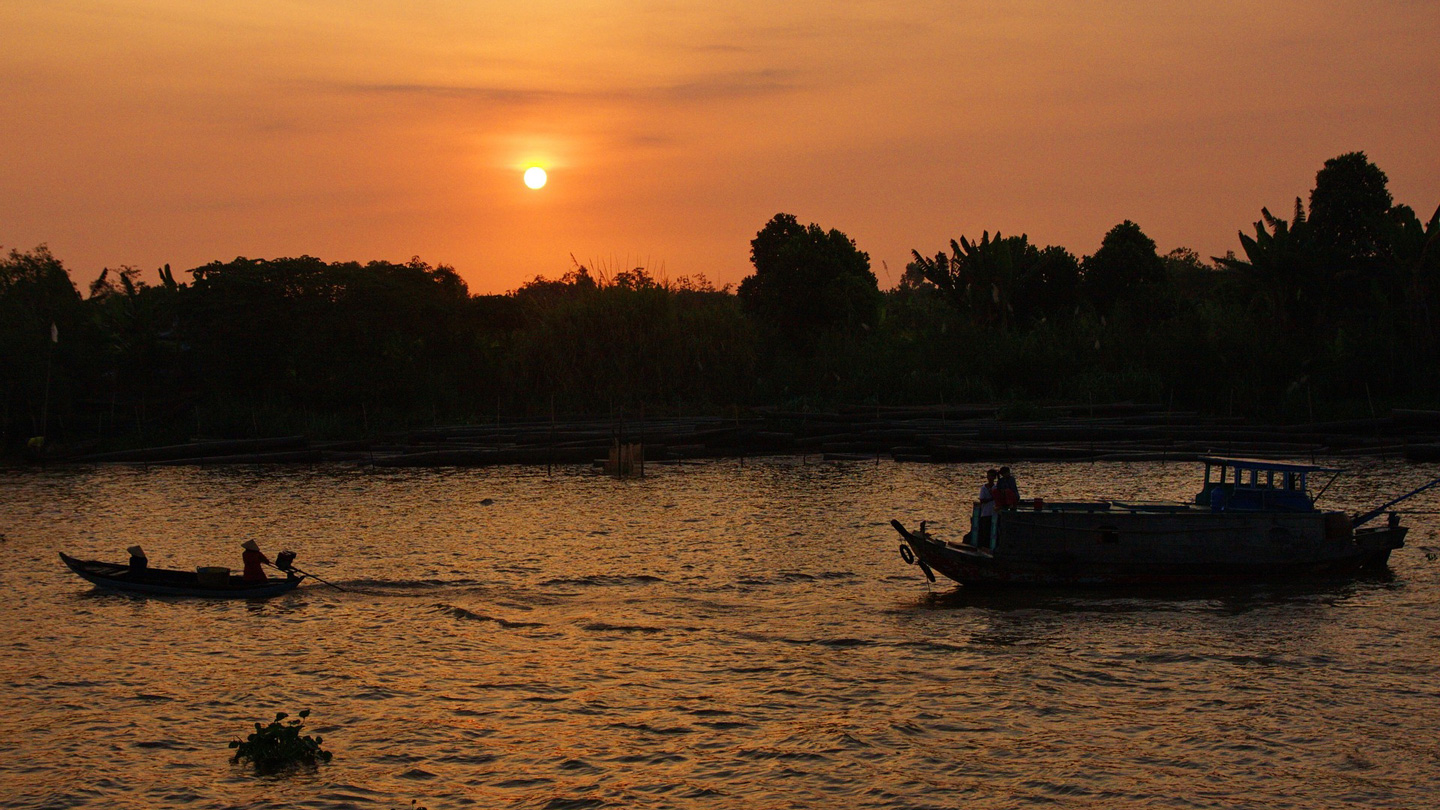
Conservation efforts for the Mekong River Vietnam are essential to safeguard its ecological integrity, biodiversity, and cultural heritage for future generations.
Protected Areas and Wildlife Sanctuaries
Establishing protected areas and wildlife sanctuaries along the Mekong River helps conserve critical habitats, species, and ecosystems.
- National Parks: Parks like Phong Nha-Ke Bang National Park and Cat Tien National Park protect diverse landscapes, rare species, and important ecological corridors.
- Reserve Zones: Designated reserve zones within the Mekong River basin safeguard key habitats, breeding grounds, and migration routes for wildlife.
Sustainable Fisheries Management
Promoting sustainable fisheries management practices is crucial for maintaining fish stocks, supporting livelihoods, and preserving aquatic biodiversity.
- Catch Limits: Implementing catch limits, size restrictions, and seasonal closures help prevent overfishing and ensure the sustainability of fish populations.
- Community Engagement: Involving local fishing communities in decision-making processes and resource management initiatives fosters stewardship and conservation awareness.
Wetland Conservation and Restoration
Protecting and restoring wetlands along the Mekong River is vital for maintaining water quality, flood regulation, and habitat connectivity.
- Mangrove Restoration: Rehabilitating mangrove forests in coastal areas helps mitigate erosion, provide nursery habitats for fish, and sequester carbon.
- Wetland Protection: Preserving wetland ecosystems like the Tra Su Cajuput Forest and Lang Sen Wetland Reserve conserves biodiversity and supports migratory bird populations.
Environmental Education and Awareness
Raising public awareness about the importance of the Mekong River and its conservation is key to fostering a culture of environmental stewardship.
- School Programs: Integrating environmental education into school curricula and extracurricular activities educates students about river ecosystems, biodiversity, and sustainability.
- Community Outreach: Engaging local communities through workshops, seminars, and outreach programs empowers individuals to take action, adopt sustainable practices, and advocate for conservation.
Policy Advocacy and Collaboration
Advocating for strong environmental policies, regulations, and international cooperation frameworks is essential for effective conservation of the Mekong River.
- Policy Development: Formulating and implementing policies that prioritize conservation, sustainable development, and climate resilience aligns with global commitments and national priorities.
- Cross-sector Collaboration: Collaborating across sectors, disciplines, and borders fosters integrated approaches to conservation, resource management, and climate adaptation in the Mekong basin.
Future prospects for the Mekong River Vietnam
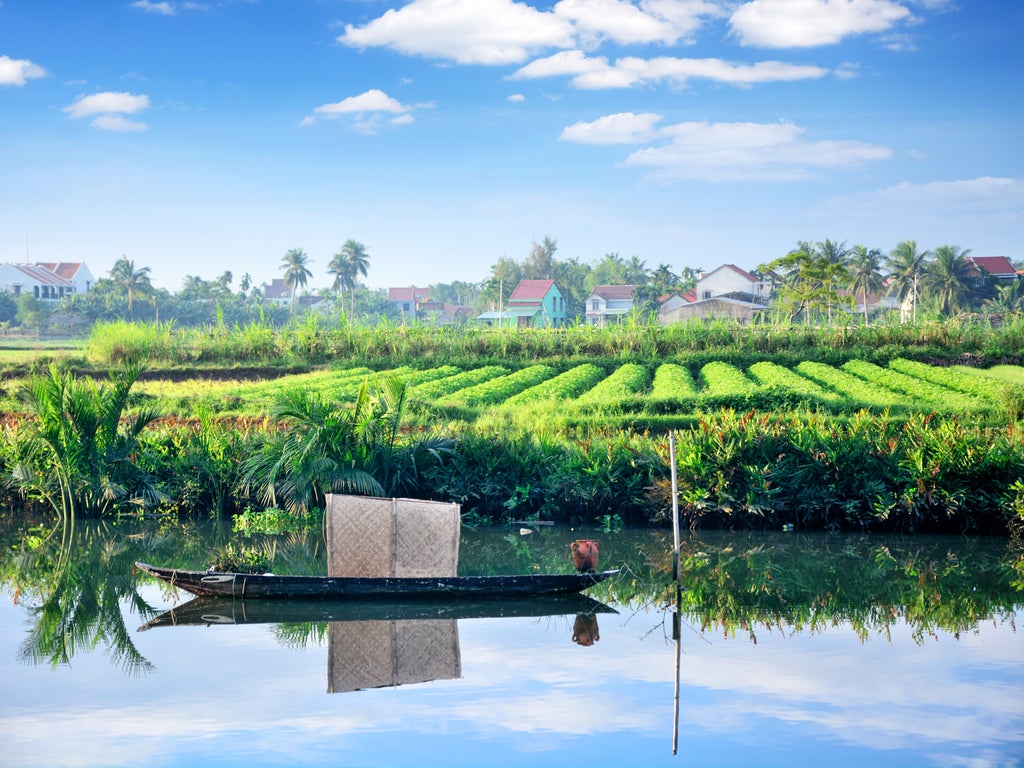
The future prospects for the Mekong River in Vietnam hinge on collective efforts to address challenges, promote sustainable practices, and ensure the river’s continued vitality.
Sustainable Development Pathways
Embracing sustainable development pathways that balance economic growth with environmental protection is crucial for the long-term health of the Mekong River.
- Green Infrastructure: Investing in green infrastructure, renewable energy projects, and eco-friendly technologies reduces environmental impacts and enhances resilience.
- Circular Economy: Transitioning towards a circular economy model that minimizes waste, promotes resource efficiency, and fosters sustainable consumption benefits the river ecosystem.
Community Resilience and Livelihood Security
Building community resilience to climate change impacts, enhancing livelihood security, and promoting social equity are integral to the sustainable future of the Mekong River.
- Climate Adaptation: Supporting communities in adapting to climate risks, diversifying livelihoods, and accessing climate-resilient technologies strengthens their capacity to cope with environmental changes.
- Livelihood Diversification: Encouraging alternative livelihood options, such as eco-tourism, agroforestry, and sustainable fisheries, reduces dependence on vulnerable sectors and enhances income stability.
Science and Innovation for Conservation
Harnessing scientific research, innovation, and technology advancements can drive conservation efforts, inform decision-making, and monitor ecosystem health in the Mekong River basin.
- Remote Sensing: Using satellite imagery, GIS mapping, and remote sensing technologies enables monitoring of land use changes, habitat fragmentation, and ecosystem dynamics.
- Citizen Science: Engaging citizens in data collection, monitoring programs, and conservation initiatives empowers local communities, scientists, and policymakers to collaborate in protecting the river.
International Cooperation and Diplomacy
Strengthening international cooperation, diplomacy, and transboundary agreements among Mekong countries fosters shared responsibility for the sustainable management of the river.
- Mekong River Commission: Enhancing the role and mandate of the Mekong River Commission (MRC) in facilitating dialogue, coordination, and joint management of transboundary water resources is essential.
- Regional Partnerships: Collaborating with regional organizations, donor agencies, and civil society groups promotes knowledge exchange, capacity building, and best practices sharing for sustainable development.
Public Engagement and Advocacy
Engaging the public, raising awareness, and mobilizing support for the conservation of the Mekong River are critical for driving positive change and securing a resilient future for the river.
- Youth Empowerment: Involving youth in environmental education, conservation projects, and advocacy campaigns cultivates a new generation of environmental leaders and changemakers.
- Media Outreach: Leveraging media platforms, storytelling, and digital communication channels amplifies conservation messages, inspires action, and builds a broader constituency for river protection.
Conclusion
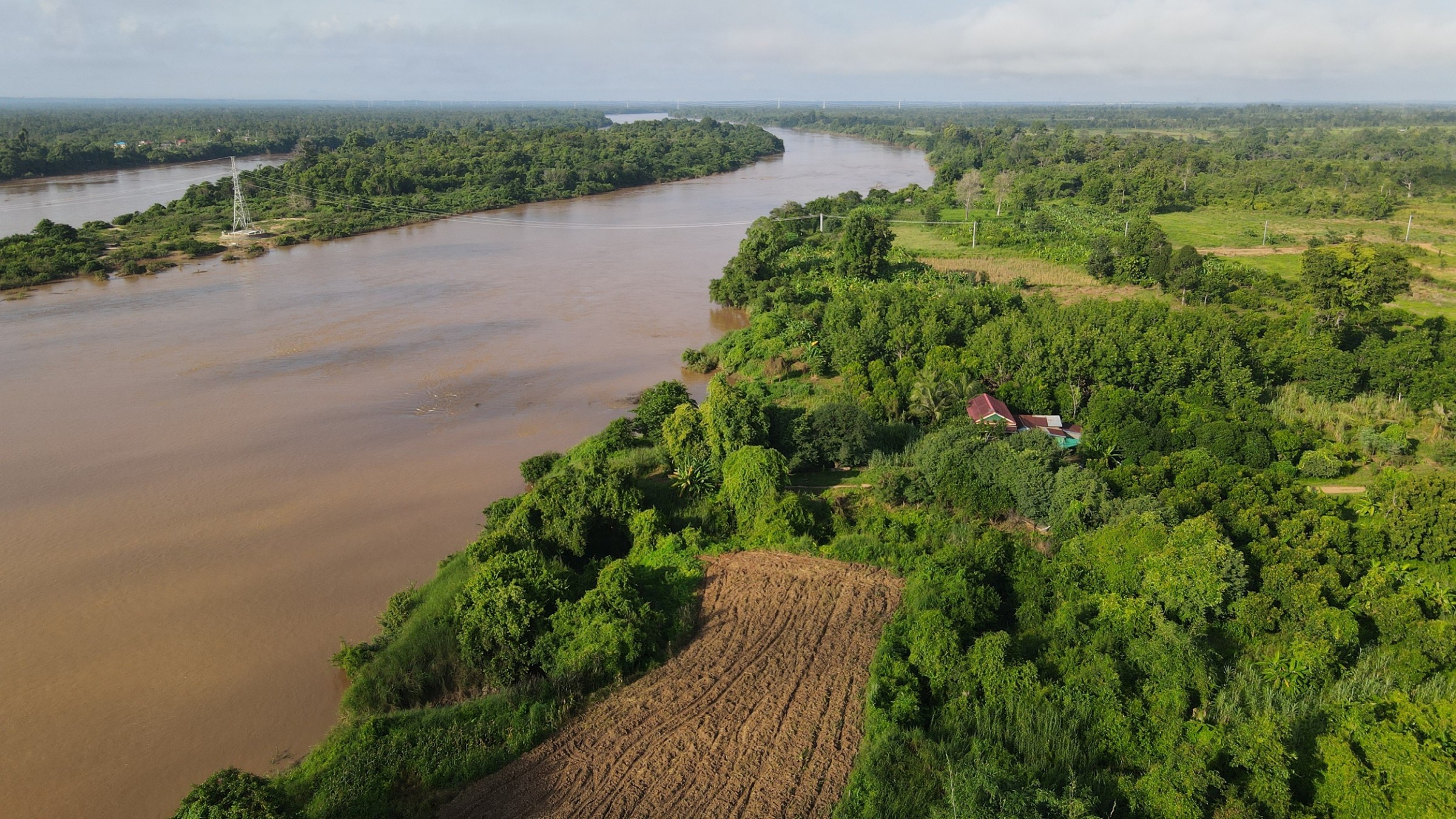
In conclusion, the Mekong River Vietnam is a lifeline that sustains ecosystems, economies, and cultures across the region. Despite facing numerous challenges, from pollution and climate change to habitat loss and overexploitation, the Mekong River remains a resilient and invaluable natural asset. By prioritizing conservation, sustainable development, and collaborative efforts, we can secure a promising future for the Mekong River, ensuring its continued flow of benefits for generations to come. Let us work together to protect, preserve, and celebrate the Mekong River as a symbol of unity, diversity, and resilience in Vietnam and beyond.

